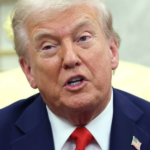While crypto proponents argue that stablecoins will help extend dollar dominance across the globe, critics warn that they could lead to financial instability in the banking sector, even as they remain a tiny portion of overall markets.
Others—including Yadav and State Street’s global head of cash and digital asset, Kim Hochfeld—are more skeptical, especially given the nascent sector’s footprint. “There’s a lot of hype, and the numbers are still tiny compared to what we see in normal TradFi,” Hochfeld told Fortune. “While I don’t deny this is the start of a big trend, the numbers are still not enough to make us either super excited or super nervous.”
Some critics, including bank lobbying groups, have warned that stablecoins could siphon money away from bank deposits as customers shift holdings to stablecoins. Because deposits serve as necessary liquidity for lending, they argue, stablecoins could threaten the credit system. One stablecoin executive, who spoke with Fortune on the condition of anonymity to discuss sensitive industry relationships, described the argument as “politically expedient,” pointing out that bank lobbying groups have previously invoked the argument to resist the introduction of now commonplace financial instruments like money market funds.
“There are trillions of dollars in money market funds,” said the executive, “Ultimately, it didn’t affect banks being able to make loans.”
Yadav said that stablecoins’ growth could still lead to unintended outcomes, especially as they hoover up short-term Treasuries, which many Wall Street institutions rely on for risk management and other forms of financial engineering. “What that means for the rest of the financial system as [stablecoins] become gargantuan is anybody’s guess,” she told Fortune.









